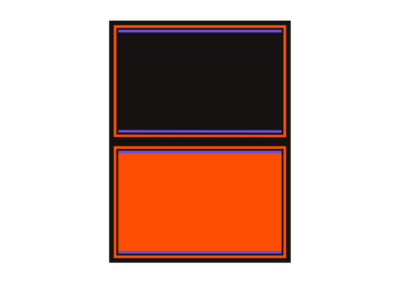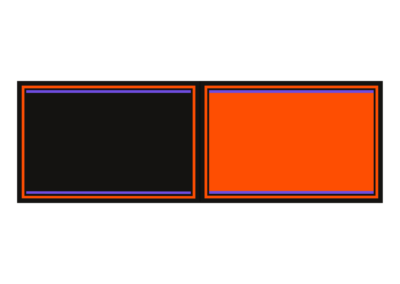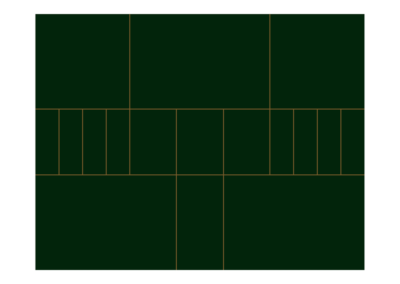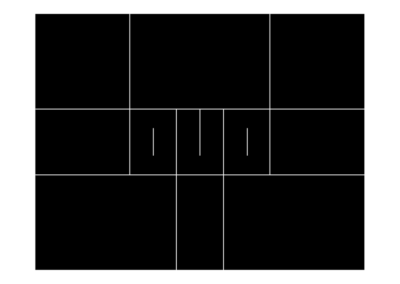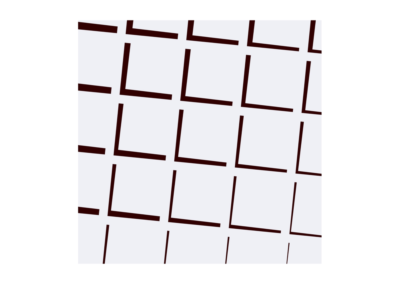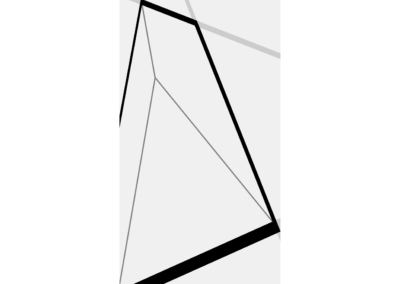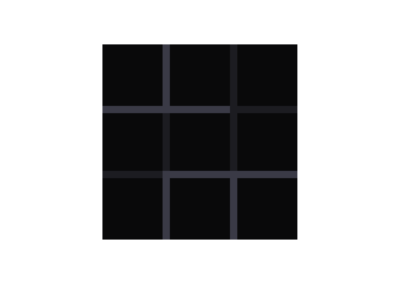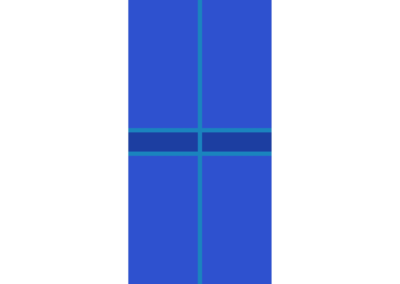NEW VIEWS IN THE REALM OF GRIDS
When two perpendicular lines intersect, they form a cross, which is the smallest unit of a grid. In a text accompanying the portfolio of etchings Symmetria, printed by the Editions Fanal Basel in 1982, Aurélie Nemours wrote «The point, the heart of the cross, which we call a square… ». However, during my work with Broken Grids, I observed that when broken lines displaying a gap intersect at their break, they create a virtual point, and this point is round in shape.
Grids have been important elements in constructive art since its inception, and their artistic possibilities have been explored by many artists ever since. Today, it can be a challenge for painters to achieve true originality while remaining within the strictly geometric and mathematical realm. It was in this context that my concept of creating images of grids without physically painting them emerged. This idea eventually evolved into what I call the WHITE GRIDS series, which opened up a new vision for me in the art of grids. In these paintings, only black shapes are painted, while the White Grids are bright virtual optical effects of the backgrounds, created by the tension between the black forms.
The black shapes prompted me to consider the broader idea of BROKEN GRIDS, which I then explored through various artistic possibilities. One was to divide the grid into vertical stripes and move them up and down until a virtual banding effect was created on the canvas. Subsequently, building on the experience with the White Grids, I explored the possibility of producing virtual optical effects using fine lines for the grids. When two fine lines with a gap intersect at the break, a virtual dot is created by making the background colour optically brighter. In combination with other elements of the painting, it is possible to influence the shape of these virtual textures for example to create rectangles. In some paintings I have exploited this effect by juxtaposing virtual and physically painted rectangles.
In a recent set of diptychs derived from broken grids, mediated by larger surfaces, the interaction of colours assume a pivotal role in the artistic expression of these paintings.
In the series called DECONSTRUCTION SEQUENCES, I have been working with broken grids in an ongoing process of transformation, documenting the changes in a serial progression of images.
In the GRIDS MODULATIONS and MONOCHROMATIC GRIDS series, I explore the artistic expression of colours in intact wide strip grids. By changing the colour of certain parts of the grid, what I call Modulations of the Grid, the selected parts become distinct shapes that interact with each other to create compelling compositions. In this series I also introduce the use of irregular grids. For the series of Monochromatic Grids, I have created some paintings in which I explore the interaction between different shades of a colour.
Alternative narratives of assemblages of Broken Grids and Grid Modulations are presented in the BEYOND section.
NEW VIEWS IN THE REALM OF GRIDS
Grids have been important elements in constructive art since its inception, and their artistic possibilities have been explored by many artists ever since. Today, it can be difficult for painters to achieve true originality while remaining within the strictly geometric and mathematical realm. With this challenge in mind, I have been delving into new artistic expressions of the grid.
Explore the BEYOND section to discover the alternative narratives presented through assemblages of Broken Grids and Grids Modulations paintings.





